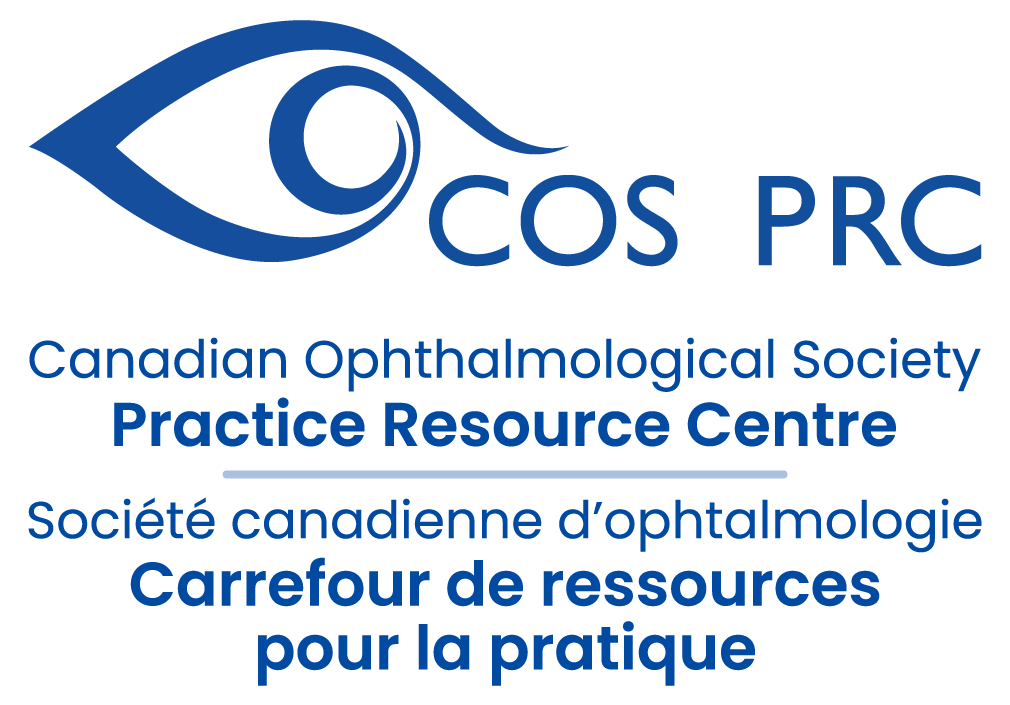CJO: February 2023 Issue Highlights
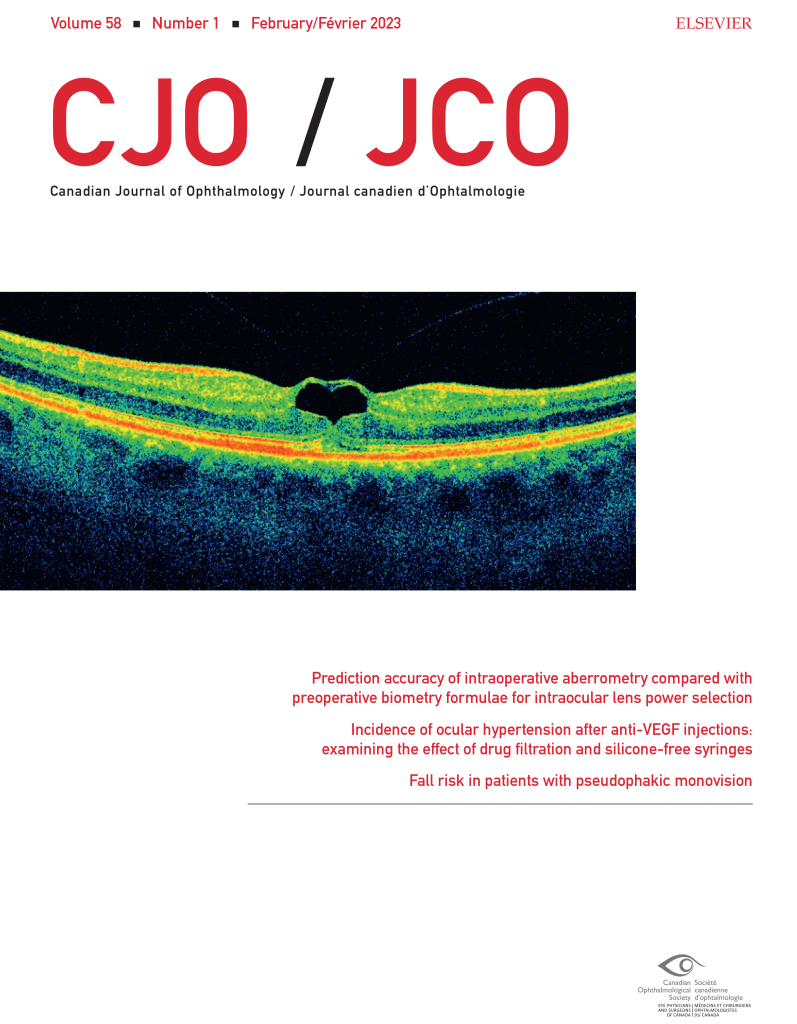
The February 2023 CJO is now available online. Here are some of the highlights:
Editor-in-Chief’s report: 2022 at CJO: In this editorial, Dr. Varun Chaudhary highlights some of the CJO’s key accomplishments and outcome metrics from 2022, including the journal’s historic Impact Factor of 2.592.
Resident Perspectives + visual abstract: Our talented team of residents have summarized 5 articles with a focus on what’s most relevant to ophthalmology learners here in Canada and around the globe, including the article featured in our December visual abstract, Comparative evaluation of dacryocystorhinostomy with retrograde intubation and conjunctivo-dacryocystorhinostomy.
Original research articles:
• Prediction accuracy of intraoperative aberrometry compared with preoperative biometry formulae for intraocular lens power selection
• Long-term follow up of choroidal changes following COVID-19 infection
• Myocutaneous sliding flap for reconstruction of divided eyelid nevus
• Fall risk in patients with pseudophakic monovision
• Choroidal vascularity index in thyroid-associated ophthalmopathy
Research letters, photo essays, and case reports:
• Surgical simulation in Canadian ophthalmology programs: a nationwide questionnaire [research letter]
• Modified DMEK technique for eyes with hydrophilic intraocular lenses [research letter]
• Canadian medical student perspectives on ophthalmology education: a needs assessment [research letter]
• Salt-and-pepper retinopathy: multimodal imaging of rubella retinopathy [photo essay]
• Laser-induced maculopathy after iris depigmentation cosmetic treatment [case report]
• Surgical management of a recurrent hereditary benign intraepithelial dyskeratosis lesion involving a Boston KPro [case report]
• Determination of the size of the stripping area using trypan blue in Descemet’s stripping only [correspondence]
Follow the CJO on social media:
Facebook: CanJOphth
Instagram: @cjo_jco
LinkedIn: CJO – JCO
Twitter: @CanJOphth
WSPOS Myopia Consensus Statement 2023
WSPOS are excited to announce the release of the 2023 Myopia Consensus Statement prepared by WSPOS Bureau Members.
This is an update to the 2016 Consensus Statement and includes details on:
• Interventions To Slow The Progression Of Myopia
• What Does Not Work or Has Minimal Effect
• What Appears To Work
We invite you to view the 2023 Myopia Consensus Statement!
Read the full Statement here:
Eye Care Competency Framework

The WHO ECCF is a tool to enable quality care and integrated service delivery that meet the needs of the population.
The WHO Vision and Eye Care Programme developed the ECCF as a critical tool through which the workforce can be planned and developed with aligned competencies. This tool can assist WHO Member States and stakeholders in planning and maintaining an effective eye care workforce in terms of composition, deployment and ongoing availability to meet population needs. Additionally, the ECCF can
be used for educational and training purposes in eye care, regulation, and performance monitoring. The broader goal of the ECCF is to improve health and social and economic development outcomes by ensuring universal availability, accessibility, acceptability, coverage and quality of the eye care
workforce.
Download the full article here.
Canadian Eye Care Today – Volume 1, Issue 3
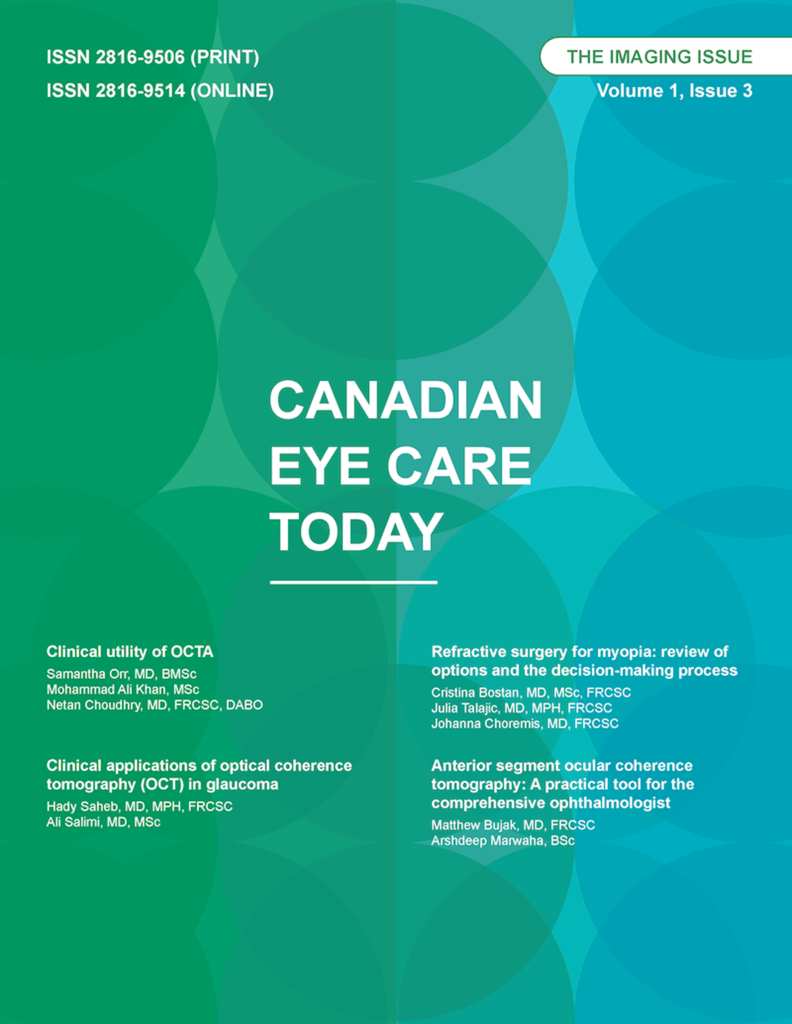
The latest issue of Canadian Eye Care Today for 2022 is now available for your reading pleasure. This publication examines issues and topics that are relevant to today’s clinician in the treatment and management of eye disease from a Canadian perspective.
Some of the content you will find in this issue:
Clinical utility of OCTA
Samantha Orr, MD, BMSc
Mohammad Ali Khan, MSc
Netan Choudhry, MD, FRCSC, DABO
Refractive surgery for myopia: review of options and the decision-making process
Cristina Bostan, MD, MSc, FRCSC, DABO
Julia Talajic, MD, MPH, FRCSC
Johanna Choremis, MD, FRCSC
Clinical applications of optical coherence tomography (OCT) in glaucoma
Hady Saheb, MD, MPH, FRCSC
Ali Salimi, MD, MSc
Anterior segment ocular coherence tomography: A practical tool for the comprehensive ophthalmologist
Matthew Bujak, MD, FRCSC
Arshdeep Marwaha, BSc

Copyright © 2022 Catalytic Health, All rights reserved.
CJO: December 2022 Issue Highlights
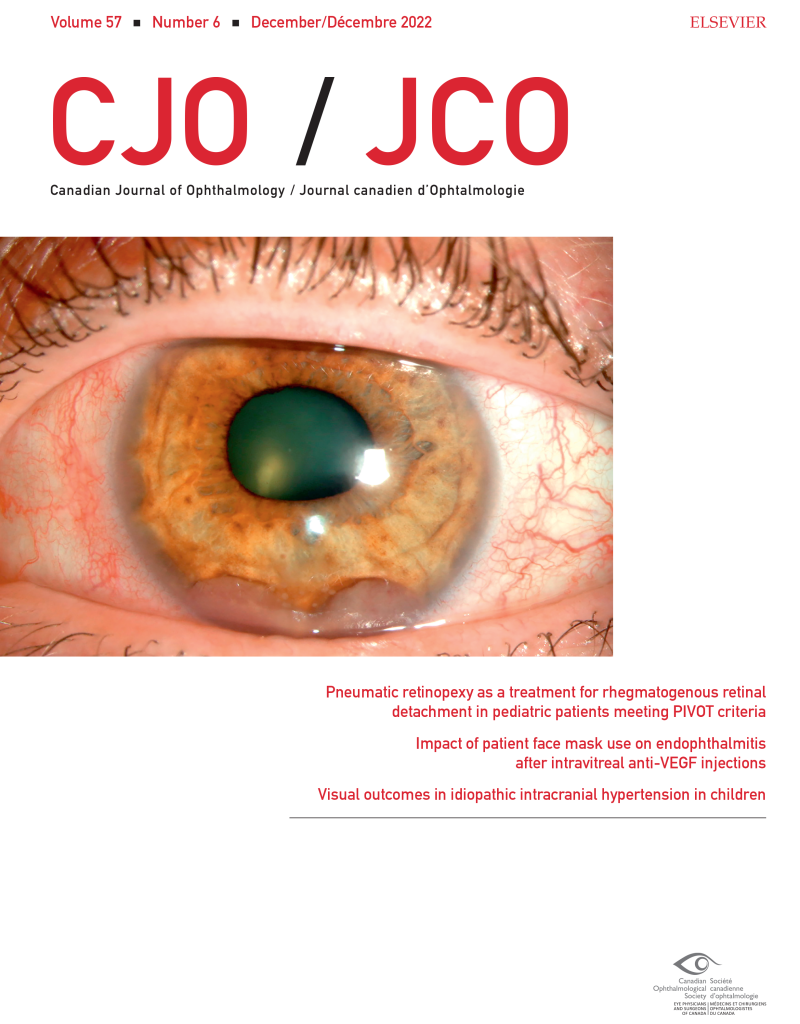
The December 2022 CJO is now available online. Here are some of the highlights:
Resident Perspectives + visual abstract: Our talented team of residents have summarized 5 articles with a focus on what’s most relevant to ophthalmology learners here in Canada and around the globe, including the article featured in our December visual abstract, Pneumatic retinopexy as a treatment for rhegmatogenous retinal detachment in pediatric patients meeting PIVOT criteria.
Original research articles:
• University of Toronto’s redesigned ophthalmology curriculum and eye dissection lab
• Effect of bariatric surgery on macular and peripapillary choroidal structures in young patients with morbid obesity
• Visual outcomes in idiopathic intracranial hypertension in children
• Dacryops and clinical diagnostic challenges
• Impact of patient face mask use on endophthalmitis after intravitreal anti-VEGF injections
Photo essays and case reports:
• Multimodal imaging in a case of rubella retinopathy [photo essay]
• Ophthalmic complications of immune checkpoint inhibitor therapy for metastatic ovarian cancer [photo essay]
• Late-onset diffuse lamellar keratitis after treatment with cenegermin [case report]
• Sebaceous cell carcinoma presenting as ocular Marjolin ulcer following immunosuppression for a chemical burn [case report]
• Secondary pseudotumour cerebri syndrome in children: clinical characteristics and long-term outcomes [correspondence]
Follow the CJO on social media:
Facebook: CanJOphth
Instagram: @cjo_jco
LinkedIn: CJO – JCO
Twitter: @CanJOphth
Canadian Rheumatology Association Recommendations for the Screening, Monitoring, and Treatment of Juvenile Idiopathic Arthritis–Associated Uveitis.

We are pleased to share with you the Canadian Rheumatology Association Recommendations for the Screening, Monitoring, and Treatment of Juvenile Idiopathic Arthritis–Associated Uveitis.
These Canadian JIA-associated uveitis guidelines were developed by a working group of 14 pediatric rheumatologists, 6 ophthalmologists, 2 methodologists and 3 caregiver/patient representatives using a GRADE-Adolopment approach applied to the 2019 ACR JIA-Associated Uveitis Guidelines. This streamlined method was chosen to develop Canadian guidelines considering the Canadian context, including patient preferences, cost/resource considerations, and feasibility of implementation.
The recommendation has been published as a living guideline on MAGIC authoring and publication platform (MAGICapp) and has also been published as a full manuscript in the Journal of Rheumatology.
Click here to read the CRA Recommendations for JIA-Associated Uveitis on MAGICapp
Click here to read the full manuscript published in the Journal of Rheumatology
Congratulations and thank you to the CRA Uveitis Guidelines Panel, led by Drs. Roberta Berard and Deb Levy, and supported by Guidelines Committee Chair Dr. Glen Hazlewood and methodologist Jordi Pardo Pardo. These guidelines were developed in collaboration with several ophthalmology colleagues and have been endorsed by the Canadian Ophthalmological Society Board. Special thanks as well to Dr. Arnav Agarwal for his assistance with the MAGICapp platform.
The CRA will be sharing these documents with the larger rheumatology community including disease organizations, patient groups and Canadian media outlets. We encourage you to share it with your associates and colleagues via email or social media.
All media enquiries should be forwarded directly to Ahmad Zbib at [email protected] or through the CRA’s website at https://rheum.ca/contact-us/.
On behalf of the CRA Board of Directors,
Ahmad M Zbib MD CPHIMS-CA
Chief Executive Officer
Canadian Rheumatology Association
Phone: 905-952-0698 EXT 8
Email: [email protected]
CJO: October 2022 Issue Highlights
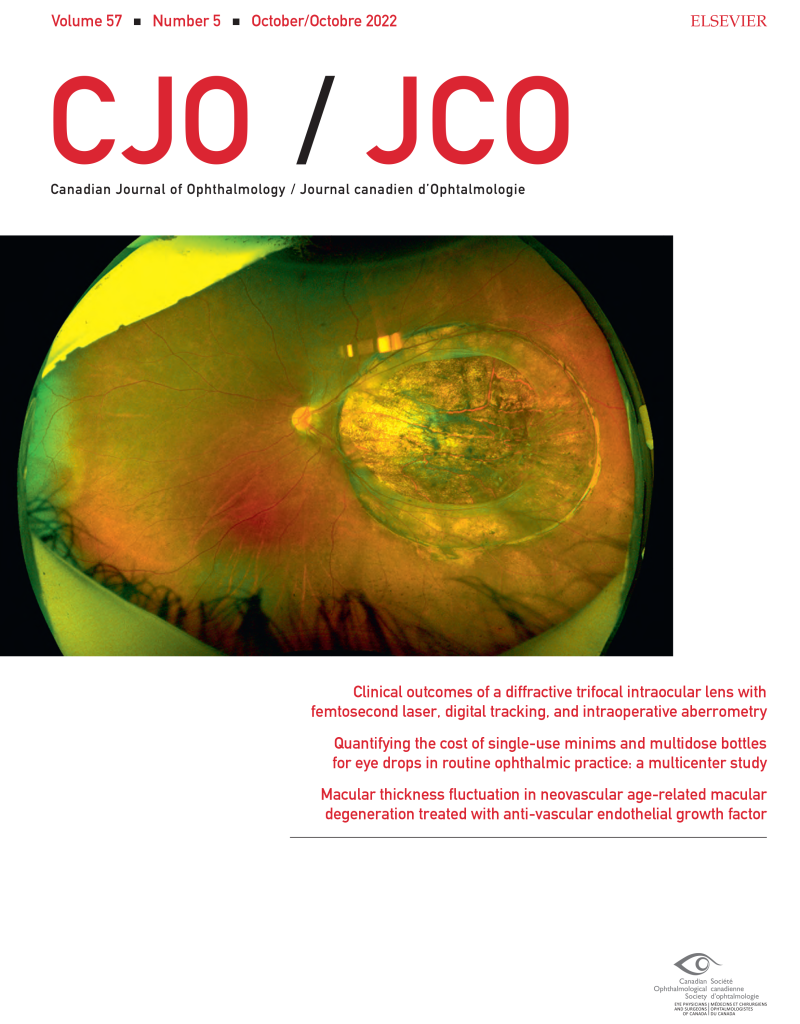
The October 2022 CJO is now available online. Here are some of the highlights:
Resident Perspectives + visual abstract: Our amazing team of residents have summarized 6 articles with a focus on what’s most relevant to ophthalmology learners here in Canada and around the globe, including the article featured in our October visual abstract, Macular thickness fluctuation in neovascular age-related macular degeneration treated with anti-vascular endothelial growth factor.
Original research articles:
· Canadians’ attitudes toward corneal donation: informational-motivational videos increase willingness toward corneal donation
· Clinical outcomes of a diffractive trifocal intraocular lens with femtosecond laser, digital tracking, and intraoperative aberrometry
· Bacillary layer detachment in acute nonpenetrating ocular trauma
· Quantifying the cost of single-use minims and multidose bottles for eye drops in routine ophthalmic practice: a multicentre study
Research letters, photo essays, and case reports:
· Severe ophthalmic involvement in granulomatosis with polyangiitis resistant to cyclophosphamide [photo essay]
· Multimodal imaging in perifoveal unilateral retinal pigment epithelium dysgenesis [photo essay]
· Ultra-wide-field retinal imaging in tetralogy of Fallot before and after cardiac surgery [case report]
· Superior limbic keratoconjunctivitis following ptosis repair [case report]
·Intraocular pressure fluctuations in a professional woodwind musician with advanced glaucoma [correspondence]
Follow the CJO on social media:
Twitter: @CanJOphth
Instagram: @cjo_jco
Facebook: CanJOphth
Ophthalmology Foundation Education Consortium Newsletter
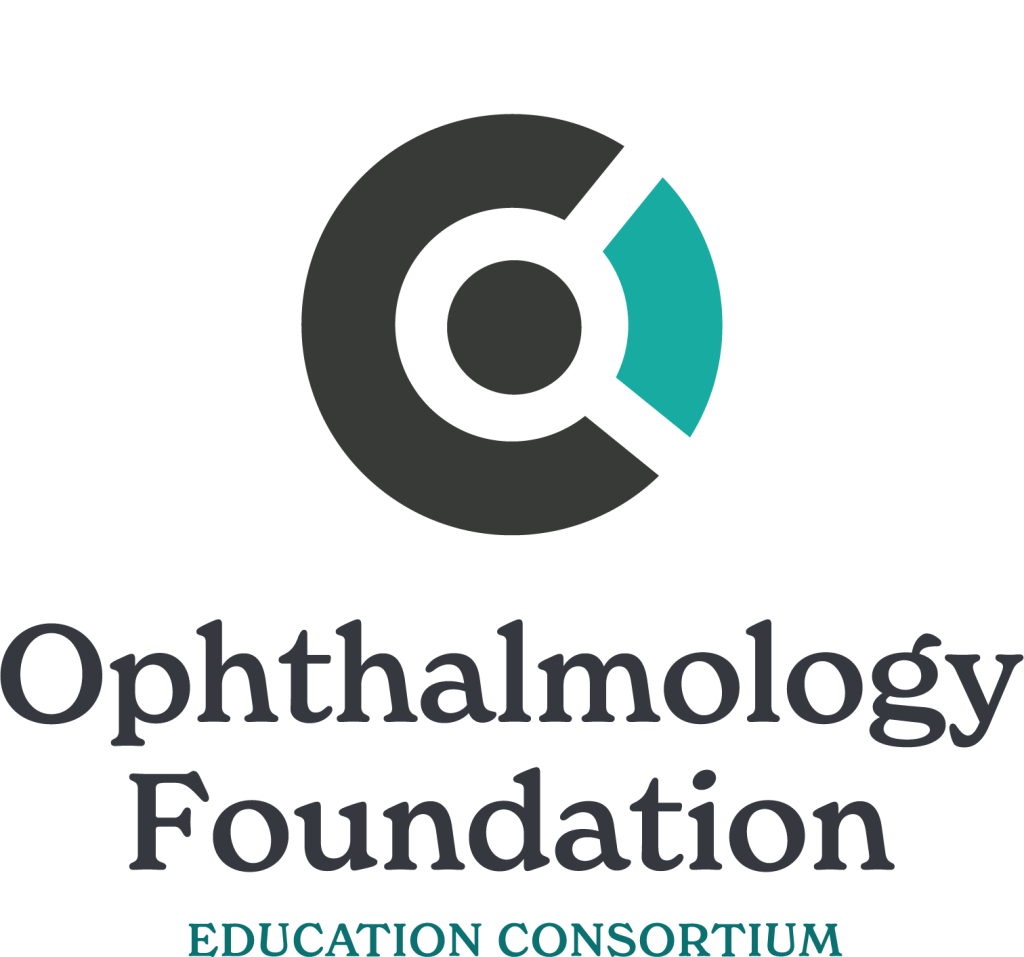
August 2022 Edition
This months’ newsletter features the following topics:
- Teaching Skills for Ophthalmic Educators Online Series – Module 14: How to Teach Using Social Media
- AAO 2022: Ophthalmic Educators Workshop: Optimizing Your Surgical Curriculum
- Teaching the Trainers Workshops at the 9th Annual Scientific Congress of the College of Ophthalmology of Eastern Central and Southern Africa (COECSA) 2022
- International Direct Observation of Clinical Skills (iDOCS)
- Recap: Reddit Ask Me Anything
- This Month’s Resources
For more information on these topics and to register for any of the courses, please click on the download link:

CJO August 2022 Highlights
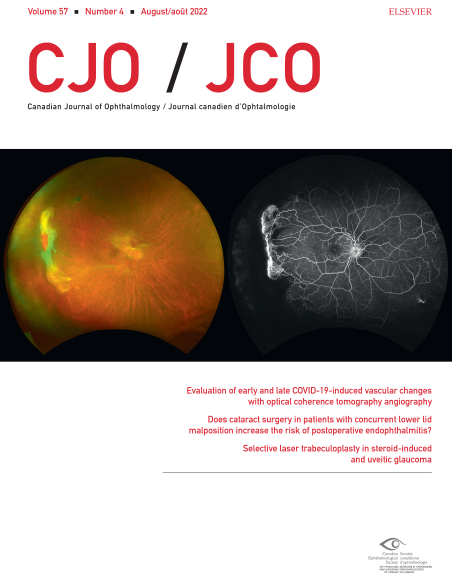
The August 2022 CJO is now available online. Here are some of the highlights:
Resident Perspectives + visual abstract: Our amazing team of residents have summarized 7 articles with a focus on what’s most relevant to ophthalmology learners here in Canada and around the globe, including the article featured in our August visual abstract, Pretreatment with frequent topical betamethasone in Ahmed glaucoma valve implantation.
Review article: Advances in magnetic resonance imaging of orbital disease
Original research articles:
· Clinical audit of retinoblastoma management: a retrospective single-institution study
· Longitudinal assessment of type 3 macular neovascularization using 3D volume-rendering OCTA
· Chalazion: racial risk factors for formation, recurrence, and surgical intervention
· Challenging the current treatment of residual postoperative ptosis: safety and efficacy of repeat Müller’s muscle conjunctival resection
Research letters, photo essays, and case reports:
· Bilateral curvilinear chorioretinal streaks [photo essay]
· Gore-Tex suture exposure following transscleral fixation of an intraocular lens [photo essay]
· Transplantation of autologous lamellar scleral graft for the treatment of corneal perforation [case report]
· Experiences from a national webinar with recently matched Canadian ophthalmology residents for medical students [case report]
· Uveal melanoma presenting as panophthalmitis in the absence of an intraocular mass [correspondence]
Follow the CJO on social media:
Twitter: @CanJOphth
Instagram: @cjo_jco
Facebook: CanJOphth
